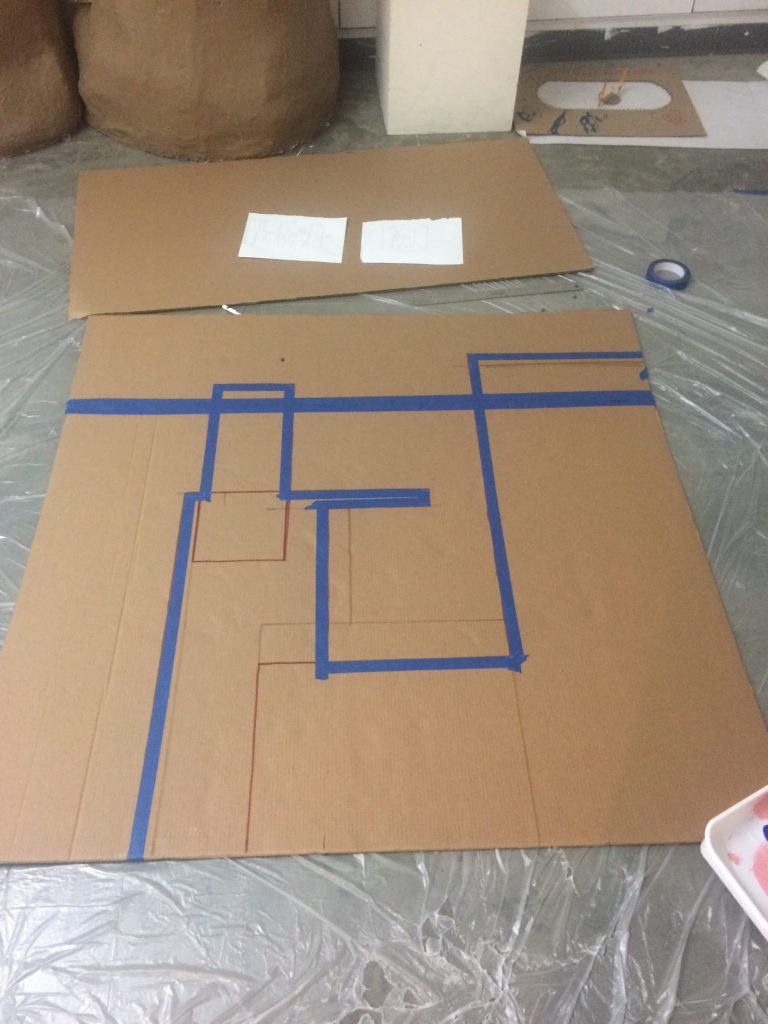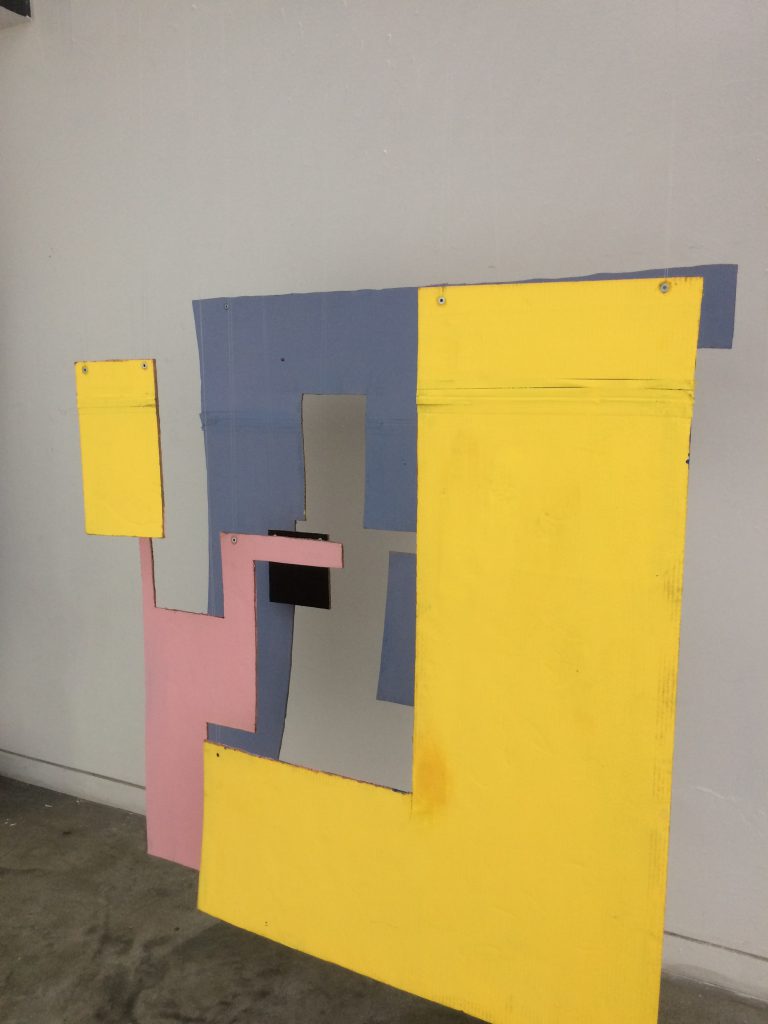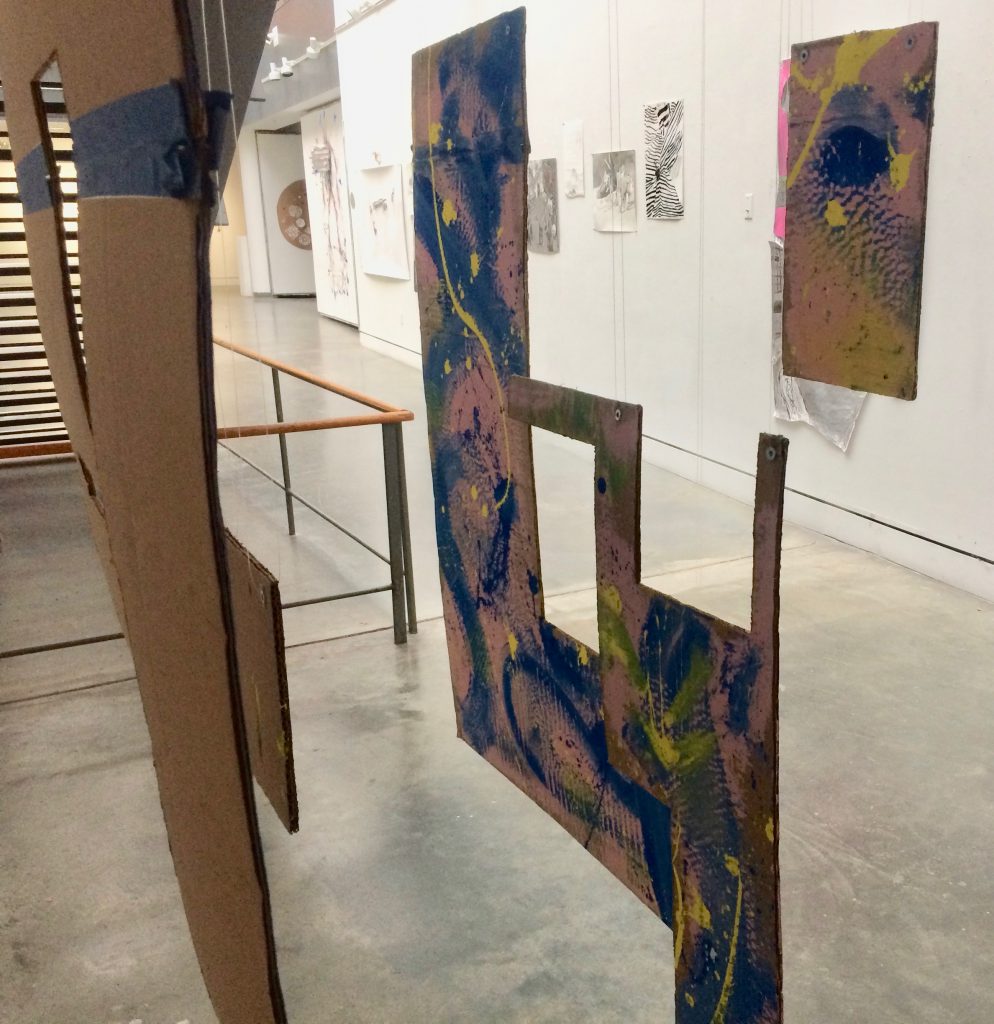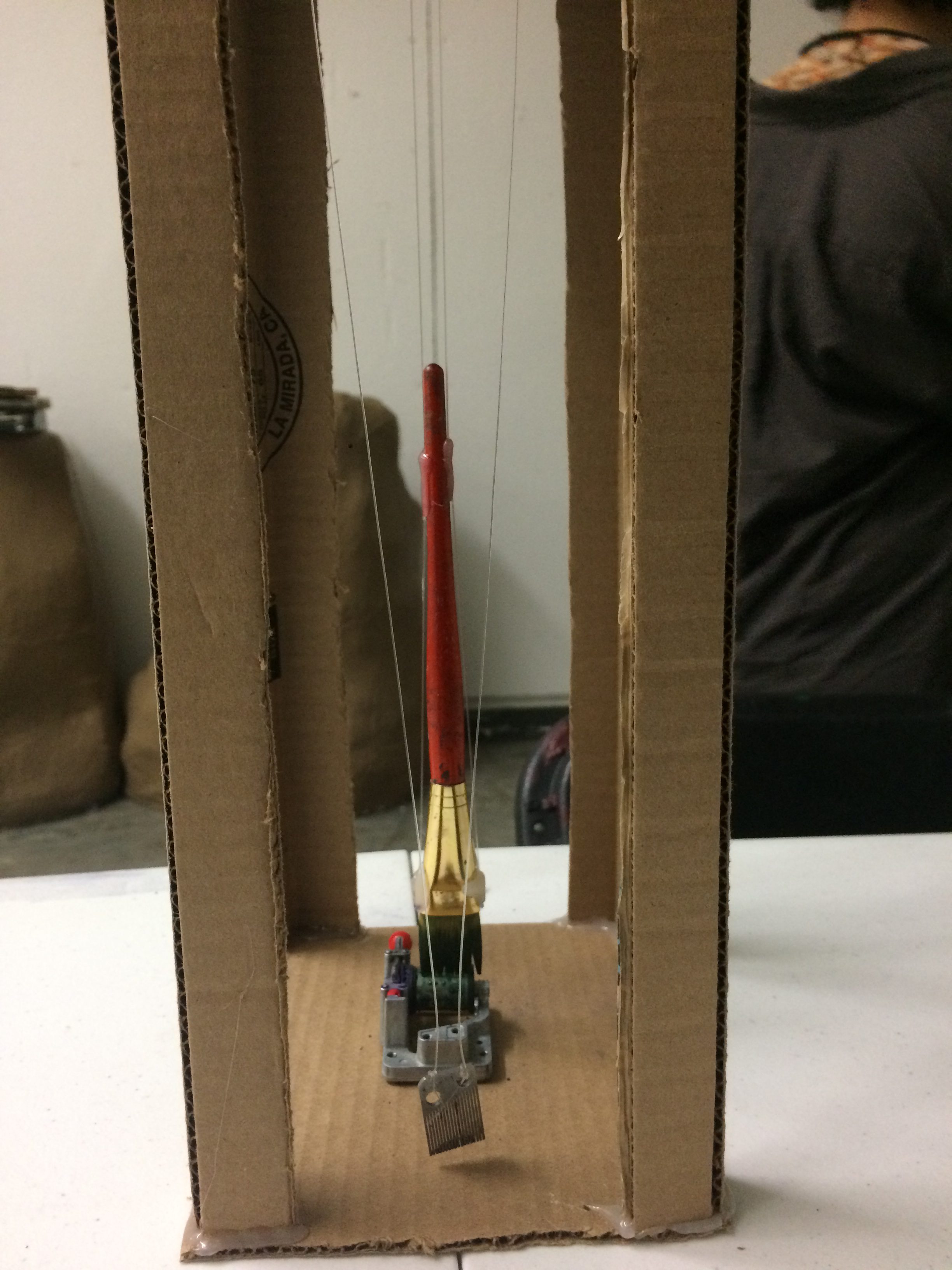“Personally, I thought that instead of painting squares, triangles and other geometric forms which still had a realistic feel…it might be interesting to free abstract forms from the stasis of paintings and suspend them in the air, joining them together so that they might inhabit our environment with us, sensitive to the actual feel of reality.”
The way Munari described his thought process behind creating his Useless Machines has stuck with me since I read it in October. When I read that quote for the first time it got me to think about my relationship with sculpture in a very refreshing way, and I knew that I wanted to experiment with it more. I started thinking about what I wanted to do for my final project during our Destroy to Create assignment. I decided to hang some components of my project purely for the function of it, but then remembered what Munari had said about hanging shapes to bring them into our environment. That planted the seed in my mind for this project although at that point all I knew was that I wanted to create my own “Useless Machine”.
When I was looking at Munari’s Useless Machines to find inspiration for my own machine I kept thinking about his quote and decided I wanted to explore my interest in this idea of bringing shapes that usually only in painting into the physical world so they can take up space in our dimension. I looked through collections of Munari’s work and kept seeing paintings with interesting shapes that would catch my eye. Eventually, I decided I wanted to take one of Munari’s paintings and essentially do to it what he did with his mobiles: I would bring these shapes that existed in two dimensions and bring them into the third dimension. There were only a few paintings of his that were simple enough for the vision I had, so it was pretty easy to pick the painting I wanted to imitate.
I sketched the design free-hand and taped it down to paint it. Unfortunately, the cardboard bent a significant amount from the paint which set me back a day or two. I had to press them overnight to get them back to normal. Even then they still started to curl again. I decided to paint the back of the cardboard to help straighten them out, but I had spent so much time painting exactly within the lines and trying to get everything to look even so I wanted to have some fun with it. I painted huge swirls, flicked paint off my brush to make splatter, made footprints with my shoes, even poured paint directly onto the cardboard from the bottle. I just wanted to loosen up and have some fun with the back.
I cut the cardboard, punched holes on the top to hang it, and glued washers on either side. The hanging was definitely the most challenging part of this project. I wanted them to be perfectly aligned so that when viewed from straight on it looked like the original painting. I knew it wouldn’t be perfect, but I had no idea how challenging it would be, especially with just one person. I was limited by how few bars are under the stairs, and their placement. I realized it just wouldn’t be possible to perfectly align all the pieces in the space. The other challenging part was figuring out how to hang the cardboard from the stairs. I could just barely reach the poles from a ladder, and trying to get the pieces to hang evenly from on the stairs was almost impossible. I ended up having to switch between the two to get everything hung safely.
Once I saw it hung I didn’t mind as much that there were big gaps between the pieces, because what this project was meant to do is get you to look at the space between the shapes. What’s the point of making this piece three dimensional if it just looks like the original painting? I wanted people to look at this painting and pay attention to its dimensionality and the space it inhabits. I intentionally hung the pieces in layers, with the warmer colors in front and cooler colors in back to accentuate the depth of the piece. I also originally wanted people to be able to walk through the piece and see the painting hanging around them so they could feel immersed in it, but unfortunately, the staircase wasn’t wide enough. However, I think peeking behind the piece and seeing the vibrant splashes of paint on the back invoke a similar feeling. It gives the viewer a feeling that they’re seeing “behind the scenes”, maybe even seeing a side of 2D paintings that aren’t usually visible to us.
I feel like I’ve learned a lot about space and dimension through this project, and I especially feel like I’ve learned a lot from Munari. He was someone who liked to experiment and play, and this project gave me a chance to connect with that side of my art.






